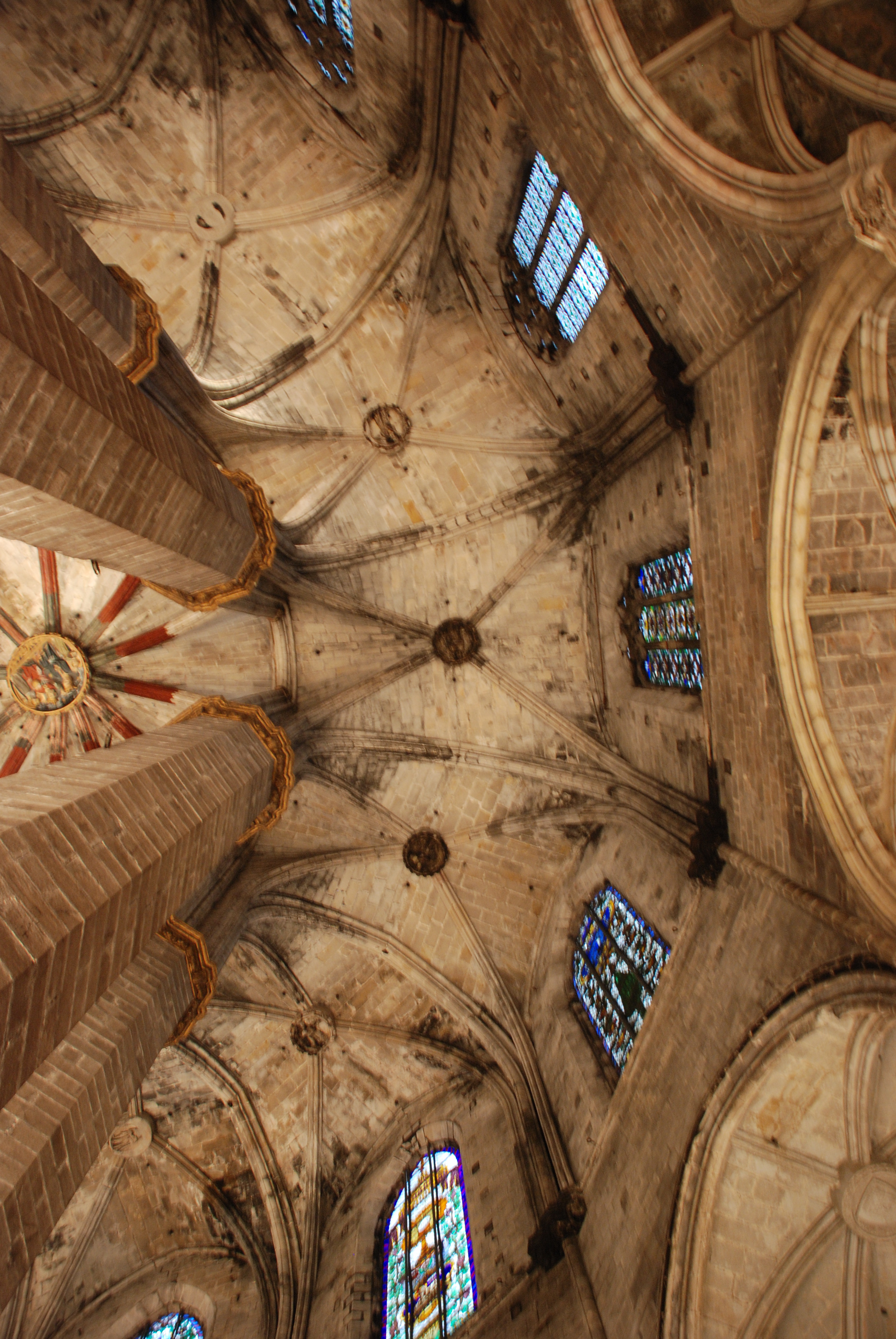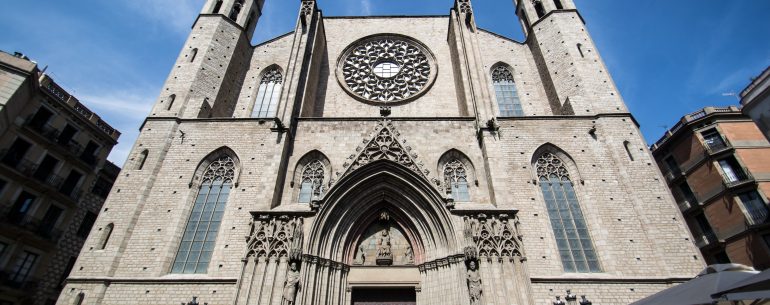Barcelona is rich in history and is known for its links to maritime expeditions that have set sailed from its ports for hundreds of years. Prior to making the journey into the unknown, these sailors relied on the protection of God to protect them throughout. The number of people wanting to be blessed in this way grew rapidly, and in 1329, work began on Santa María del Mar and has captured the imagination of many since.
History of Santa Maria del Mar
The first recorded mention of a basilica being by the sea in Barcelona dates back to 998 A.D. With the association between religion and the sea being made some 300 years before officially being built. On 25th March 1329, building started on the Santa María del Mar and was commemorated by King Alfonso IV of Aragon laying the foundation brick. It took many years for work to be completed, with the final brick being laid in November 1383 and the basilica being consecrated in August 1384. The main delay to work was caused by a fire in 1379 that destroyed some important parts of the building. Yet, architects Berenguer de Montagut and Ramon Despuig, who assumed his role in 18th Century, worked well to give a ground-breaking church that is adored by Barcelona.
The 1428 Catalan Earthquake reached 8 on the modern, Richter Scale, and even though mainly affected rural areas of Catalonia, the Santa María del Mar felt the affect and even had its rose window smashed as a result. 31 years later, in 1459, the rose window was finally restored. During the Spanish Civil war, many of the basilica’s wonderful and rich interior looted and set on fire by anti-clerical rioters in 1936 and somehow survived, despite being on fire for 11 days.
Design of Santa María del Mar

The exterior of Santa María del Mar is quite interesting. Hidden in the middle of Ribera in the Gothic Quarter, this secluded basilica does not capture the imagination at first, as most tourists stumble across it whilst wandering the streets. Next to one side of the church is the Fossar de les Moreres, a monument that remembers those who fought to protect the city in the war of Spanish succession in 1714. Here there is a lit flame and poem on the sculpture that was built over a cemetery of the fallen. As for the exterior features of Santa María del Mar, the north-west tower was completed in 1496, but the other was not finished until 1902. On a whole, the classic features found in Gothic buildings are present here, yet the fact it is located in a built up area makes one assume that the interior will also be smaller and cramped.
However, the interior of Santa María del Mar is actually very light and spacious. The three aisles nicely divide the space, with the middle leading to a beautiful altar. The pillars lead to very high ceilings that are the norm for gothic builds. With some art inside, there are many enclosed spaces with shrines, the stained glass adds to the light areas and creates colour to the darkened bricks of this historic basilica. As well as this, there are crypts below the altar that recognised some of Barcelona´s most respected members of the Catholic faith over the years.
Basilica of Santa María del Mar: Modern use

Nowadays, the Santa María del Mar is a site of pilgrimage for catholics who wish to attend a mass, that usually take place every day at 7:30pm. As well as this, there are special masses around holydays of Christmas and Easter. Lastly, you can also get guided tours, go into the crypts and even climb up to the terrace of the Santa María del Mar Basilica.
Popular culture
In 2006, local lawyer and author, Ildefonso Falcones, wrote “Catedral del Mar” or “Cathedral by the sea”. This book was set in the 14th century and tried to encapture the excitement, changes and modernisation that mass trade by sea was bringing to Barcelona. Throughout the novel, Santa María del Mar is used as the link that gives it historical context- as it coincides with the building of the basilica. In addition to this, the main characters often have a link to the construction of the church and it is referred to throughout.
Due to the success of the book, Netflix spent a lot of money transforming it into a series in 2018 and has also been a successful series. We recommend reading and watching to understand how much of a lasting impact Santa María del Mar has had on local and national culture!




Leave a Reply